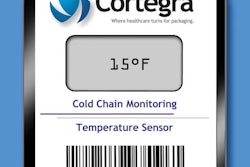Chambers & Owen is a leading Midwest wholesaler supplying convenience stores and gas stations with everything from snacks to facial tissue to cigarettes. The firm spends a lot of time removing cartons of cigarettes from corrugated cases and putting them in a warehouse so that the cartons can then be aggregated according to the specific needs of individual stores. An automated case cutter from R.E.D. Stamp Inc. (www.redstampinc.com) has made this task of case cutting and carton removal a whole lot easier since it was installed in February of 2008.
Susan White, assistant stamping supervisor at the Janesville, WI, firm, says R.E.D. Stamp’s relationship with C&O has been established over the past six years because C&O has installed a number of tax-stamp applicators built by R.E.D. Stamp. The tax stamps are required by law and are applied to cartons or individual packs or both by C&O.
“Knowing how well their tax stampers work,” says White, “we had a lot of confidence in R.E.D. Stamp’s new case cutter. I believe we were the first customer to install a post-prototype version of this machine.”
The automatic case cutter cuts any boxed product having a footprint from 6 inches x 6 inches to 18 inches x 29 inches and a height from 7 inches to 24 inches. At C&O, cigarettes arrive from cigarette manufacturers in corrugated cases on stretchwrapped pallets. Operators break down the pallets and put the corrugated cases on the motorized conveyor section that is the infeed of the Model CCU-6-12 case cutter. Motorized rollers supplied by Interroll (www.interroll.com) deliver precise position control as cases move from station to station in the case cutter.
Each case stops at two stations inside the case cutter. In both stations, photocells from Banner Engineering (www.bannerengineering.com) detect the presence of a case and send a signal to the central PLC, a Series FX-3U from Mitsubishi (www.meau.com). The PLC responds with an output triggering whatever actuation its programming calls for. “We’ve been using Mitsubishi PLCs a lot,” says R.E.D. Stamp’s Jeff Collom when asked about the machine builder’s choice of controller. “They’ve been pretty much bullet-proof.”
First station
The actuation in the first station involves a pneumatically driven platen that comes down from above until it’s in contact with the top of the case. On this platen is a Balluff (www.balluff.com) position sensor, the Micropulse SLT Linear Position Transducer BTL-16 (photo top of page). It detects the height of the case and sends that information to the PLC.
Once its height has been measured, the case moves into the next station, where two pneumatically activated clamps come in from the left and the rear of the case to hold the case firmly in place and to measure its width and length. Once again, the measuring is done by Balluff BTL-16 position transducers, and again the data is sent to the PLC. At this point, the PLC has all the information it needs to signal the three Mitsubishi Series HF-KP servo motors that drive the gantry-style cutting system.
“Our engineering staff was drawn to the Balluff components based on dependability, accuracy, and cost,” says R.E.D. Stamp’s Collom. “Specifying Balluff also fits in with our basic premise of building machinery that’s suitable for a wide range of applications by relying on standardized and readily available industrial components as opposed to solutions that are more proprietary in nature. That same philosophy lay behind our selection of Banner sensors, Mitsubishi servos and PLC, the THK components, and the Interroll motorized rollers.”
Once all the case dimensions are delivered to the PLC, it’s time for case cutting. The tool that does the actual cutting is quite simple: four razors attached to a knob-shaped head. This razor-bearing head moves up or down because it’s affixed to a ball-screw spline (see sidebar above) from THK (www.thk.com). The ball-screw spline consists of a 24-in. grooved shaft and a ball-screw nut that spins freely inside a fixed outside ring. The grooves on the shaft are a track or raceway for the ball bearings inside the ball-screw nut. When you spin the ball-screw nut inside its fixed outside ring, the shaft moves up or down. A servo motor/pulley combination performs the task of spinning the ball-screw nut. The servo responds to outputs from the central PLC, and since the PLC knows the precise height of the case, the cutting tool always moves to the right height.
So much for the vertical movement of the cutting head. It also needs to travel around all four sides of the case. It accomplishes this because the ball-screw spline is suspended from an overhead carriage driven by two servo motors. The central PLC signals the servo motors to stroke back and forth, one along an x axis and the other along a y axis. This causes the razor-bearing cutting head to navigate completely around the case, and in the process it cuts all four sides of the case.
Cases exit the cutting cage on roller conveyors and move to a position where an operator quickly finishes the cutting process in one of two ways depending on the case style. For a “normal”-sized case holding 30 cartons, he simply removes the freshly cut top. “Double” sized cases are different. These hold 60 cartons, are much taller, and are cut not at the top but rather dead center, halfway between the bottom and the top. With these cases, instead of removing a case top, the operator separates the top half from the bottom half and puts both halves, open side up, on the conveyor leading to the warehouse.
“Improving speed was a big issue behind this project, and we definitely succeeded on that front,” says White. “We’ve gone from four or five cases per minute to eight. And because the position-sensing technology is so reliable, accuracy of the cutting is to within 1/1,000 of an inch. The machine has operated pretty much trouble-free, too. It doesn’t have that many moving parts to begin with. You change a few blades now and then and that’s it.
“It also lets us store in the program memory pre-sets for specific cases. These are helpful because some of the corrugated sidewalls are thicker than others, which means the cutting blades need to enter the case material a little more deeply and with a little more pressure. We pick these pre-sets from a menu at the touchscreen.”
As for being the first customer to install this new technology, it’s all good, says White. “We were impressed right away when R.E.D. Stamp presented this to us as a solution,” says White. “But we wondered if what they showed could actually be delivered. Shortly after installation, whatever doubts we had went out the window.”






















